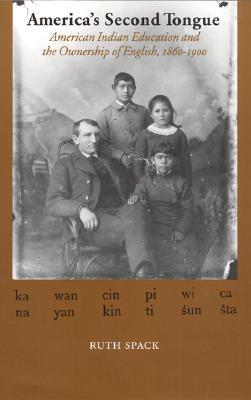Drawing on archival documents, autobiography, fiction, and English as a Second Language theory and practice, America's Second Tongue traces the shifting ownership of English as the language was transferred from one population to another and its uses were transformed by Native students, teachers, and writers. How was the English language taught to Native students, and how did they variably reproduce, resist, and manipulate this new way of speaking, writing, and thinking? The perspectives and voices of government officials, missionaries, European American and Native teachers, and the students themselves reveal the rationale for the policy, how it was implemented in curricula, and how students from dozens of different Native cultures reacted differently to being forced to communicate orally and in writing through a uniform foreign language.

America's Second Tongue: American Indian Education and the Ownership of English, 1860-1900
Drawing on archival documents, autobiography, fiction, and English as a Second Language theory and practice, America's Second Tongue traces the shifting ownership of English as the language was transferred from one population to another and its uses were transformed by Native students, teachers, and writers. How was the English language taught to Native students, and how did they variably reproduce, resist, and manipulate this new way of speaking, writing, and thinking? The perspectives and voices of government officials, missionaries, European American and Native teachers, and the students themselves reveal the rationale for the policy, how it was implemented in curricula, and how students from dozens of different Native cultures reacted differently to being forced to communicate orally and in writing through a uniform foreign language.